Fracture instability and malalignment
1. Introduction
Forearm rotation is the function of the distal and proximal radioulnar joints and forearm fractures should be managed as an articular fracture.
Forearm rotation is essential for many activities and should not be limited following injury.
There are age related differences in remodeling potential and fractures in children under 10 years old may be managed without surgery in some cases.
Limitation of pronation and supination is however unacceptable and eventual function should be as good as expected in adult patients.
Indications for osteosynthesis in pediatric forearm fractures have expanded and have a good evidence base.
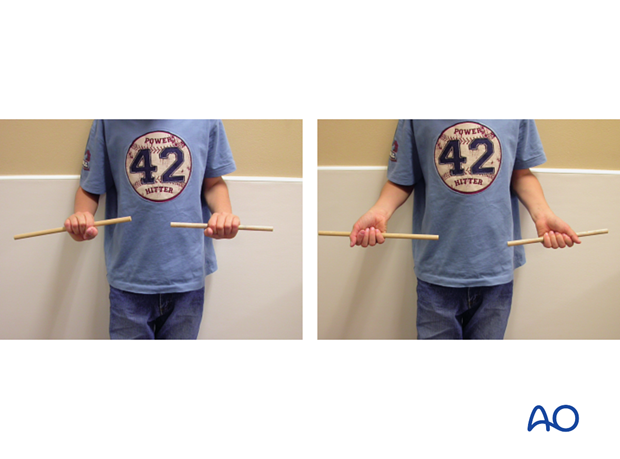
2. Factors defining stability of forearm fractures
The following fracture patterns are likely to produce suboptimal results:
- Fractures at the same level
- Oblique fractures
- Multifragmentary fractures
- Converging fragments
- Proximal shaft fractures
These patterns should be considered during patient and radiological assessment and inform the treatment strategy for an individual patient.
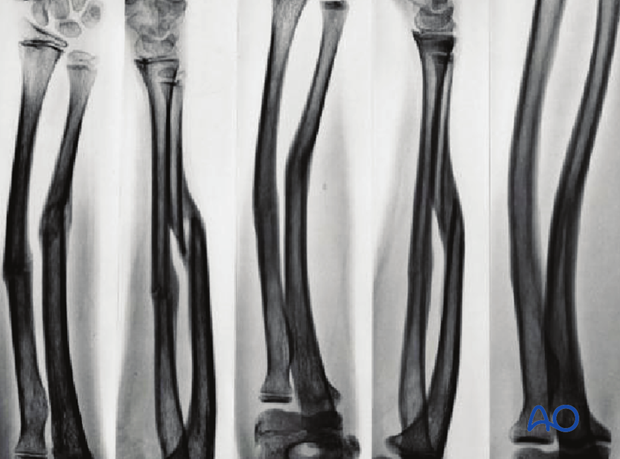
X-ray showing a both-bone fracture with fractures at the same level and an oblique fracture of the ulna
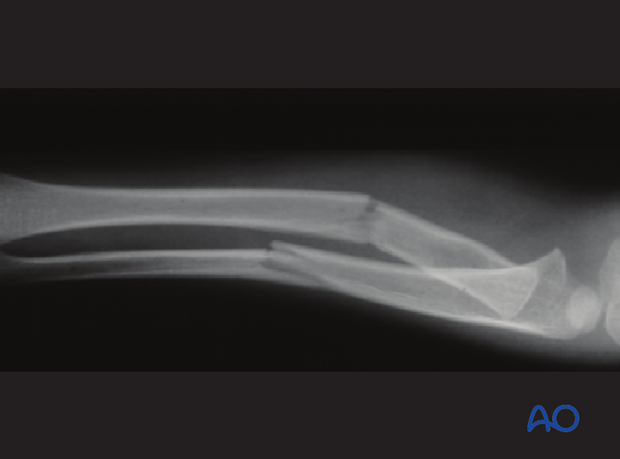
X-ray showing a multifragmentary fracture
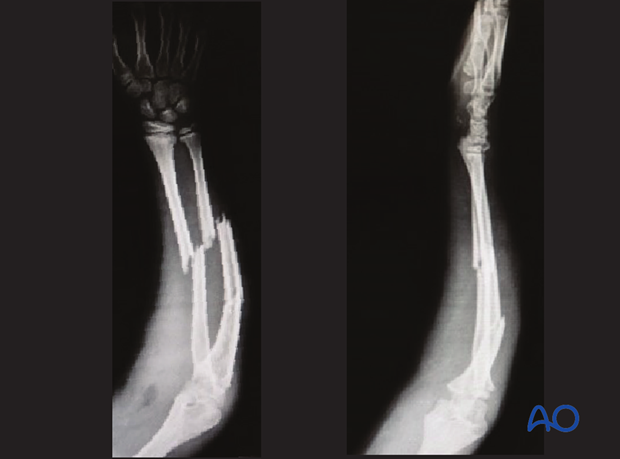
X-ray showing converging fragments in a both-bone fracture
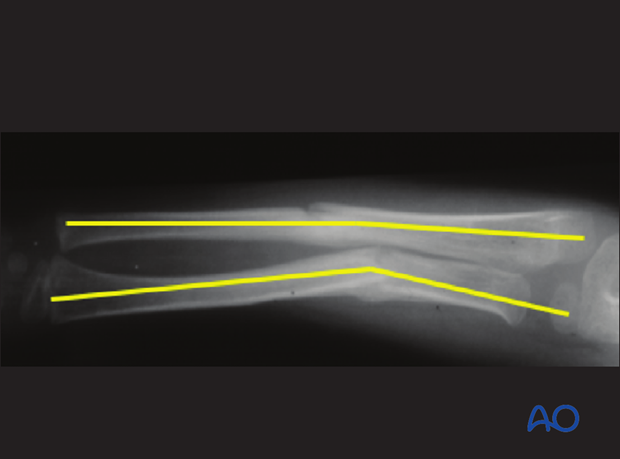
X-ray of a proximal 1/3 shaft fracture
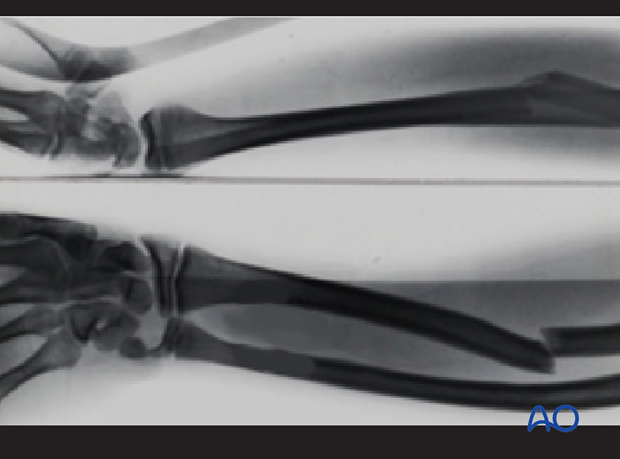
If an unstable fracture heals with deformity, long-term restriction of forearm rotation may result.
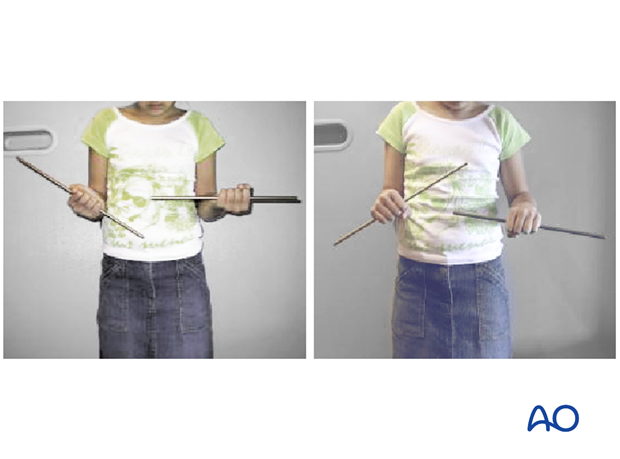
Full rotational mobility of the forearm is essential for daily and professional activities. Pronation is important for use of keyboards and supination for using a screwdriver.
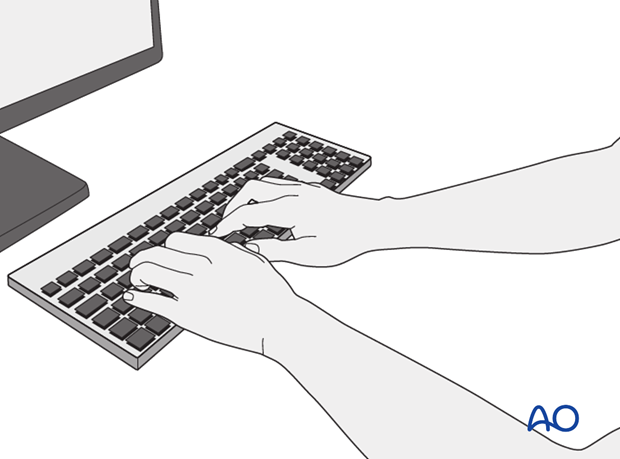
3. Malalignment of other forearm fractures
Some stable fractures including single bone fractures may also result in malalignment; and limited rotation.

4. Prevention
Operative treatment of children with unstable forearm fractures may be required to avoid long-term limitation of forearm function.
The following both-bone fracture types are often unstable and require careful supervision and timely operative intervention to prevent malunion:
- 22-D/2.1 Greenstick
- 22-D/4.1 + 4.2 Transverse, simple + multifragmentary
- 22-D/5.1 + 5.2 Oblique or spiral, simple + multifragmentary
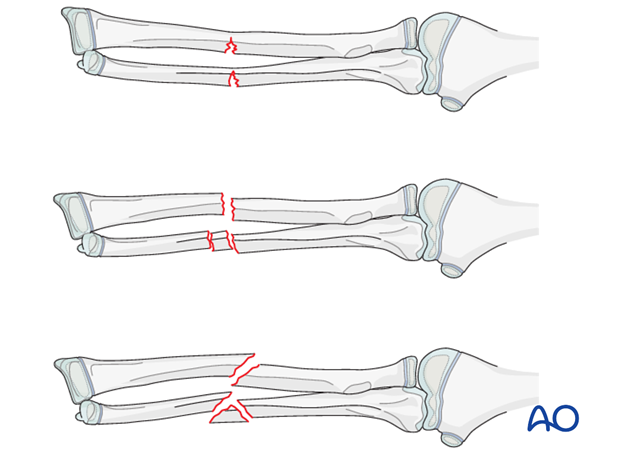
With appropriate treatment, good results ...
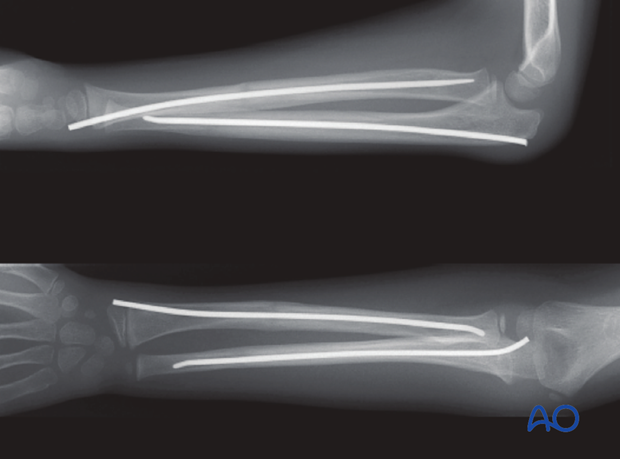
... with normal forearm function should be expected.













